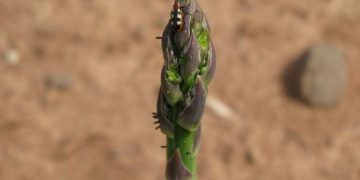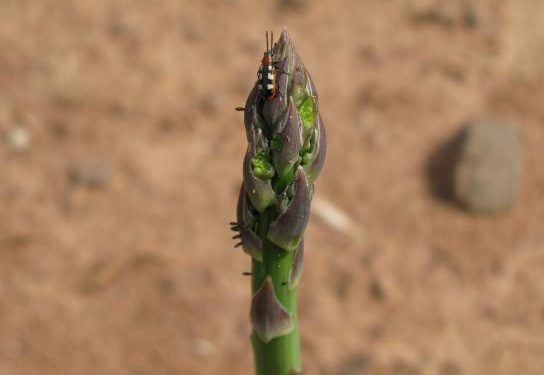It is all known that how tasty and healthy vegetable can be asparagus grown in the appropriate environment and properly cooked. Popularity of such a vegetable is increasing eventually. There are a lot of recipes of asparagus meals.
The vegetable suffers from many crop pathogens and pests as well as nutrient deficiencies. It is important to strengthen the vigour of asparagus though correct choice of place for plantings before establishing new asparagus, sustainable control measures and nutrient management.
So, it is crucial to raise the awareness on crop pests and diseases to safeguard the crop.
One of the most destructive insect pests is asparagus beetle.
For this beetle, asparagus is the main, and possibly only, host. During the asparagus growing season, there is a risk of spears being contaminated by their eggs.
Feeding damage is not a big problem on harvested asparagus spears because they are removed so soon after the pests emerge. Instead, it is the presence of the eggs, laid in rows on the emerging spears, which compromises crop quality. Beetles and larvae feed on the asparagus fern, and large infestations can strip and kill the fern, potentially reducing yield in the subsequent year.
The tests showed that most insecticides were more effective against larvae than adults. Pyrethroid cypermethrin achieved very low levels of control of adult beetles. This means it is pointless applying cypermethrin or other pyrethroids to kill adult beetles and to try to prevent them laying eggs, particularly as pyrethroid insecticides are likely to have adverse effects on non-target species, including natural enemies. None of the insecticides tested are likely to kill eggs.
It is important to consider developing strategies to manage pests in a way that reduces reliance on chemical pesticides and allows natural enemies to have as much impact as possible.
Recommendations:
- Ensure that infestations in new crops build up as slowly as possible;
- Do not apply ineffective insecticides to adults on emerging spears;
- Manage existing infestations with insecticides at the times when these are most likely to be effective;
- Avoid using insecticides that are harmful to natural enemies and bees when these are abundant in the crop;
- Be aware of new developments in alternative methods of control.
































